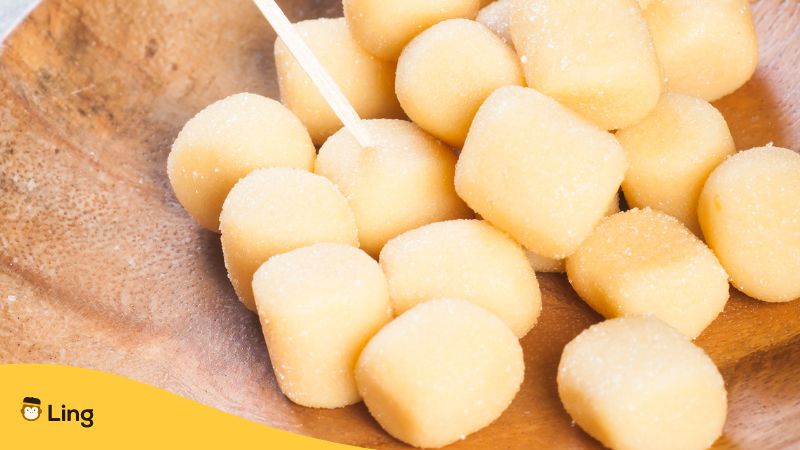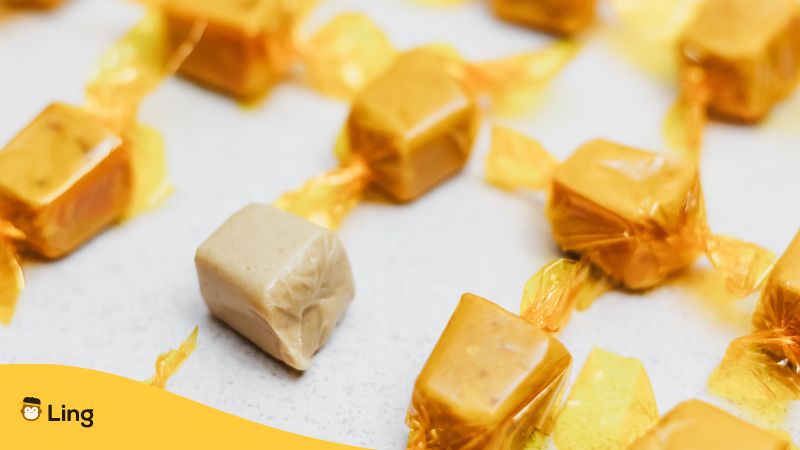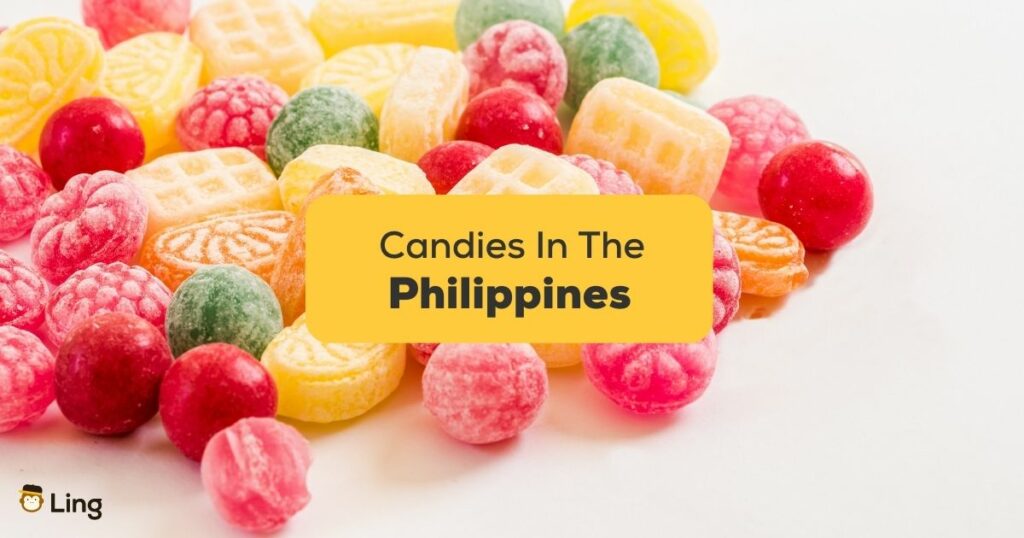When it comes to satisfying your sweet tooth, Filipino candies or kendi offer a delightful and unique experience. Bursting with flavors that reflect the vibrant culture of the Philippines, these candies have become beloved treats both locally and internationally. In this article, we will explore the rich variety of Filipino candies, their cultural significance, and the Tagalog words that make them truly special.
Planning to visit the Philippines? Well, get ready to satisfy your sweet tooth with a delightful array of Filipino candies! This Asian country is known for its two types of candy-making techniques: handcrafted and commercial.
Whether you explore artisanal stores or visit the nearest palengke (dry market), you’ll find vendors selling cute and pocket-friendly treats (around 10 pesos) without fancy labels. These candies are often cooked piece by piece by the skilled vendors themselves.
As the demand for Filipino candies skyrocketed, commercial production methods stepped in to meet the ever-growing market needs. While some traditional recipes are still lovingly made by hand, others are now mass-produced to cater to a wider consumer base. These modern production techniques ensure that Filipino candies are readily available and accessible to all candy enthusiasts.
Some of the top candies in the country include:
- Maxx menthol
- Lipps
- Mr. Yema
- Kopiko
- Starr
- X.O.
Ready to learn more about the candies enjoyed by the locals? Read on below.

Traditional Filipino Candy Varieties
Ube Pastillas
Ube pastillas is a beloved Filipino candy made from purple yam, locally known as “ube.” This sweet delicacy combines the earthy flavor of ube with the creamy goodness of condensed milk. The candy is formed into small bite-sized pieces, making it perfect for sharing or enjoying on your own.
Yema
Yema, which means “egg yolk” in Spanish, is another popular Filipino candy. It is made by mixing condensed milk, egg yolks, and butter, resulting in a creamy and luscious treat. Yema candies are often coated with sugar or wrapped in colorful cellophane, adding a festive touch to any occasion.
Polvoron
Polvoron is a crumbly and powdery candy that originated from Spain but has become an iconic Filipino treat. It is made from toasted flour, powdered milk, sugar, and butter. Polvoron comes in various flavors like cookies and cream, chocolate, and pinipig (crisped rice). It is often shaped into small, individually wrapped rectangles.
Friendly tip: If you’re residing in another country, you may also find this in Asian stores under the brand “Goldilocks” because it is one of the leading brands in the country.
Langka Candy
Langka candy showcases the unique flavor of jackfruit, a tropical fruit found abundantly in the Philippines. The ripe jackfruit is cooked with sugar until it becomes a sticky and chewy treat. Langka candy offers a distinct sweetness and the delightful aroma of tropical fruit.
Minatamis Na Kundol
Mintamis na Kundol, also known as candied winter melon, is a traditional Filipino candy made from winter melon and sugar syrup. The winter melon is cooked slowly in the syrup until it absorbs the sweetness, resulting in a translucent and jelly-like candy. Mintamis na Kundol offers a refreshing and mildly sweet taste.
Durian Candy
Durian candy appeals to those who love the unique flavor of durian, often referred to as the “king of fruits.” The candy is made by blending durian flesh with sugar and other ingredients to create a chewy and flavorful treat. Despite its strong aroma, durian candy offers a creamy and indulgent experience for durian enthusiasts.

Contemporary Filipino Candy Creations
Mango Chewies
Mango Chewies are a modern twist on traditional Filipino candies. They are chewy, mango-flavored treats that capture the tropical essence of the Philippines. With their vibrant taste and soft texture, Mango Chewies have gained popularity among locals and tourists alike.
Choc nut
Chocnut is a nostalgic candy bar loved by generations of Filipinos. Made from ground peanuts, milk powder, sugar, and cocoa powder, Chocnut offers a delightful combination of sweet and nutty flavors. Its crumbly texture and distinct taste make it a go-to snack for many Filipinos.
Pinipig Crunch
Pinipig Crunch is a crunchy and sweet candy that features toasted young rice flakes mixed with caramelized sugar. It offers a unique texture and a delicate flavor that is both satisfying and addictive. Pinipig Crunch is often enjoyed as a snack or used as a topping for other desserts.
Mango Chewies
Mango Chewies are a modern twist on traditional Filipino candies. They are chewy, mango-flavored treats that capture the tropical essence of the Philippines. With their vibrant taste and soft texture, Mango Chewies have gained popularity among locals and tourists alike.
Chocnut
Chocnut is a nostalgic candy bar loved by generations of Filipinos. Made from ground peanuts, milk powder, sugar, and cocoa powder, Chocnut offers a delightful combination of sweet and nutty flavors. Its crumbly texture and distinct taste make it a go-to snack for many Filipinos.
White Rabbit
White Rabbit is a beloved Chinese candy that has become popular in the Philippines. It is a creamy milk candy wrapped in edible rice paper. The candy melts in your mouth, releasing a smooth and milky flavor. White Rabbit candies are often enjoyed by both children and adults alike.
Powdered Milk (Mik-Mik)
Mik-Mik is a powdered milk candy that comes in a small, colorful packet. It is a popular treat among Filipino children. Using a small straw, you are meant to suck the addictingly sweet powdered milk inside the packet, creating a sweet and milky sensation. Mik-Mik offers a fun and nostalgic experience for candy enthusiasts, but it is definitely something that asthmatic people should stay away from!
Oscha (Haw Flakes)
Oscha, also known as Haw Flakes, is a Chinese candy that has gained popularity in the Philippines. It is made from dried hawthorn fruit, which is pressed into thin, disc-shaped candies. Oscha has a slightly tangy and sweet flavor, making it a favorite among those who enjoy a unique taste sensation.
Orange Swits
Orange Swits is a tangy and chewy candy that offers a burst of citrus flavor. It is shaped like a small orange slice and coated with sugar. Orange Swits candies are enjoyed by many for their refreshing taste and chewy texture.
Curly Tops
Curly Tops or flat tops are chocolate-covered candies with a distinctive shape resembling a curly crown. Made from rich and creamy chocolate, Curly Tops offer a delightful blend of sweetness and smoothness. They are a popular choice for chocolate lovers in the Philippines.
Bazooka Bubblegum
Bazooka Bubblegum is a classic bubblegum brand that has become a favorite among Filipinos. It comes in a rectangular shape with distinctive red, white, and blue packaging. Bazooka Bubblegum offers a long-lasting chew and the fun of blowing bubbles, making it a nostalgic treat for many.
Buying Filipino Candies
When it comes to buying candies in the Philippines, knowing a few Tagalog expressions can come in handy. Whether you’re exploring local markets or interacting with vendors, these common phrases will help you navigate your way to the sweet treats you desire. Here are three essential expressions for buying candies in Tagalog:
| English | Tagalog |
|---|---|
| How much is it? | Magkano ito? |
| Can I have one? | Pwede bang isa? |
| May I buy ____? | Pabili ako ng ___? |
| Do you have more? | Mayroon pa kayo? |
Remember to use these expressions with a smile, as it adds warmth to your interaction and makes your candy-buying experience even sweeter!
Over To You
Filipino candies are not just delicious treats; they also make fantastic souvenirs for travelers. Packaged in beautifully designed boxes or pouches, they are ideal gifts for friends and family back home. Filipino candies, with their vibrant packaging and unique flavors, capture the essence of the Philippines, allowing people to bring a piece of its culture with them.
If you’re interested in diving deeper into Filipino culture and learning common Tagalog words used by the locals, the Ling app is your perfect companion! Designed as a language-learning resource, Ling helps you learn the Philippines’ fascinating language quickly and effectively. With its engaging suite of features, all it takes is 15 minutes a day using the app to gain confidence in speaking the language!
Ready to embark on your language-learning journey? Download the Ling App from the App Store or Play Store today and start exploring the rich world of Filipino culture through language!































































